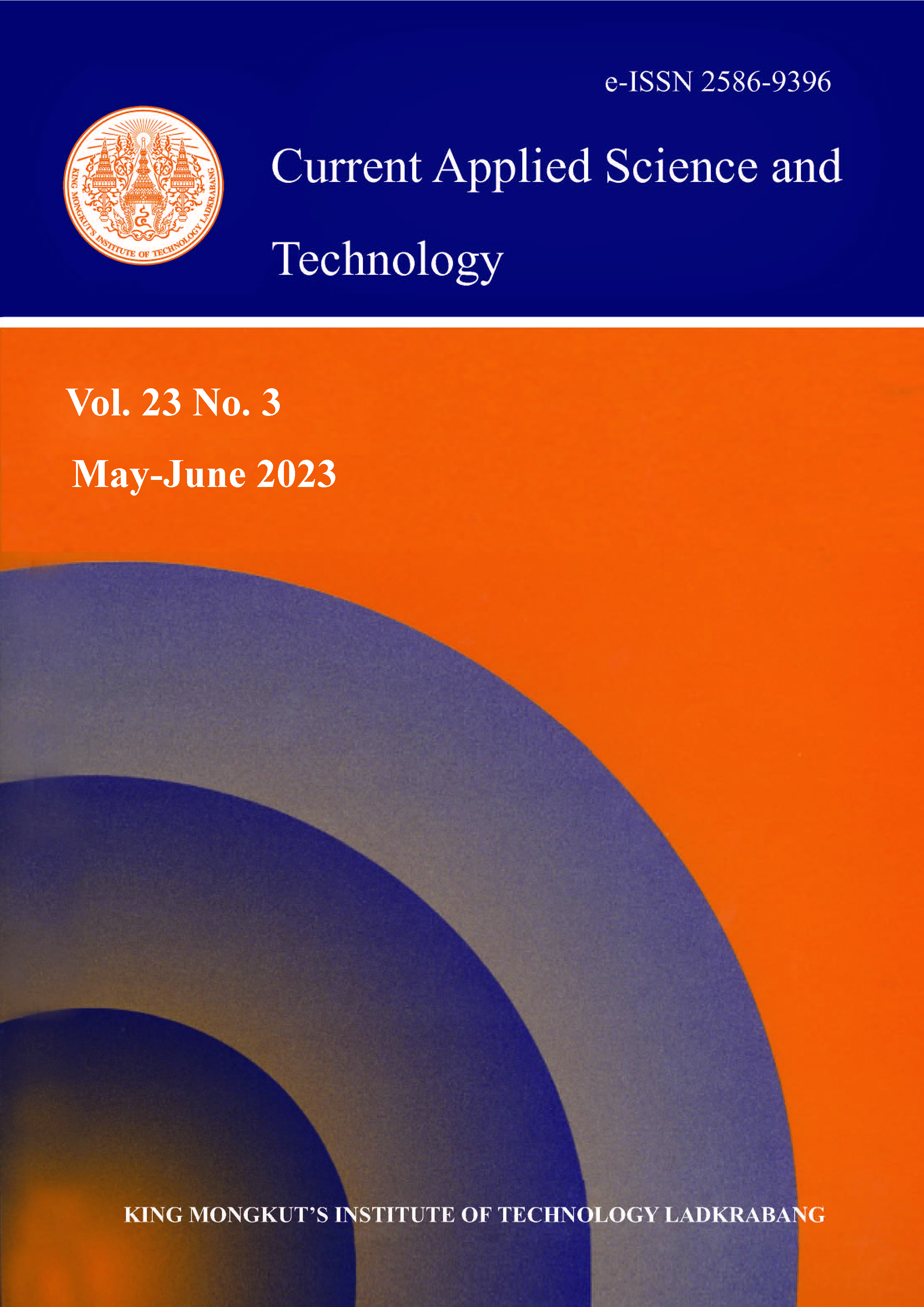EIS and Electrical Investigations on (1D) Multiwall Carbon Nanotubes as NAM Additive for Automotive Lead-Acid Battery
Main Article Content
Abstract
Currently, an application like Start-Light-Ignition (SLI) for the automotive industry prefers flooded type lead-acid energy storage and is also vastly adopted energy storage. Lead-acid cells in a battery comprise negative and positive electrodes, separated by an insulating material with industrial-grade H2SO4 as an electrolyte. The objective of the present investigation is to overcome the progressive sulphation in the negative electrode and improve the battery’s electrical performance. With one dimensional (1D) carbon nano tubes (CNTs) as an additive in the negative electrode of an automotive flooded lead-acid battery (LAB), we try to improve the battery performance. In this study, negative electrodes of LAB were prepared by loading traditional constituents like lead oxide, H2SO4, H2O, polyester binder, lignosulphonate, and Blanc Fixe while limiting MWCNTs to 0.2%. The performance studies of the prepared batteries were conducted, as per Japanese Industrial Standards (JIS). Both the batteries prepared with and without MWCNTs as an additive in negative active materials (NAM) were subjected to electrical assessments to understand the cold cranking ability, cycling stability, and charge acceptance. The batteries were also analyzed by electrochemical impedance spectroscopy (EIS) where the lower charge transfer resistance was observed with the battery having MWCNTs when compared to the control (without MWCNTs) battery. The present investigations established that the MWCNT material, as an additive, played a vital role in laying an improved conductive network across the negative electrodes for higher cycling applications (ISS/Hybrid/EV).
Keywords: lead-acid batteries; automotive; MWCNTs; negative electrode; EIS; charge acceptance; cranking and cycling ability
*Corresponding author: Tel.: (+91) 9176603143
E-mail: snd@amararaja.com
Article Details

This work is licensed under a Creative Commons Attribution-NonCommercial-NoDerivatives 4.0 International License.
Copyright Transfer Statement
The copyright of this article is transferred to Current Applied Science and Technology journal with effect if and when the article is accepted for publication. The copyright transfer covers the exclusive right to reproduce and distribute the article, including reprints, translations, photographic reproductions, electronic form (offline, online) or any other reproductions of similar nature.
The author warrants that this contribution is original and that he/she has full power to make this grant. The author signs for and accepts responsibility for releasing this material on behalf of any and all co-authors.
Here is the link for download: Copyright transfer form.pdf
References
Nakamura, K., Shiomi, M., Takahashi, K. and Tsubota, M., 1996. Failure modes of valve-regulated lead/acid batteries. Journal of Power Sources, 59, 153-157, DOI: 10.1016/0378-7753(95)02317-8.
Shiomi, M., Funato, T., Nakamura, K., Takahashi, K. and Tsubota, M., 1997. Effects of carbon in negative plates on cycle-life performance of valve-regulated lead/acid batteries. Journal of Power Sources, 64, 147-152, DOI: 10.1016/S0378-7753(96)02515-3.
EUROBAT, 2013. A Review of Battery Technologies in Automotive Applications – Full Report. [online] Available at: https://www.eurobat.org/wp-content/uploads/2021/09/rev_of_battery_executive_web_1.pdf.
Sauer, D.U., 2009. Secondary batteries – lead– acid systems | lifetime determining processes. Encyclopedia of Electrochemical Power Sources, 805-815, DOI: 10.1016/B978-044452745-5.00137-4.
Wang, J., Hou, H., Hu, J., Wu, X., Hu, Y., Li, M., Yu, W., Zhang, P., Liang, S., Xiao, K., Kumar, R.V. and Yang, J., 2019. Mechano-chemical synthesis of high-stable PbO@C composite for enhanced performance of lead-carbon battery. Electrochimica Acta, 299, 682-691, DOI: 10.1016/j.electacta.2019.01.063.
Pavlov, D., Nikolov, P. and Rogachev, T., 2011. Influence of carbons on the structure of the negative active material of lead-acid batteries and on battery performance. Journal of Power Sources, 196, 5155-1567, DOI: 10.1016/j.jpowsour.2011.02.014.
Doraswamy, S.N., Srinivas, K., Murthy, K.S.N., Jagadish, M. and Vasudeva R., 2021. Effect of milled carbon as negative electrode additive for lead acid energy storage device. Materials Today: Proceedings, 38(5), 3131-3135, DOI: 10.1016/j.matpr.2020.09.501.
Frackowiak, E. and Béguin, F., 2002. Electrochemical storage of energy in carbon nanotubes and nanostructured carbons. Carbon, 40, 1775-1787, DOI: 10.1016/S0008-6223(02)00045-3.
Prosini, P.P., Pozio, A., Botti, S. and Ciardi, R., 2003. Electrochemical studies of hydrogen evolution, storage and oxidation on carbon nanotube electrodes. Journal of Power Sources, 118, 265-269, DOI: 10.1016/S0378-7753(03)00097-1.
Moseley, P.T., 2009. Consequences of including carbon in the negative plates of valve-regulated lead–acid batteries exposed to high-rate partial-state-of-charge operation. Journal of Power Sources, 191, 134-138, DOI: 10.1016/j.jpowsour.2008.08.084.
Simon, P. and Burke, A., 2008. Nanostructured carbons: double-layer capacitance and more. The Electrochemical Society Interface, 17(1), 38-43.
Saravanan, M., Sennu, P., Ganesan, M. and Ambalavanan, S., 2013. Multi-walled carbon nanotubes percolation network enhanced the performance of negative electrode for lead-acid battery. Journal of Electrochemical Society, 160(1), DOI: 10.1149/2.062301jes.
Banerjee., A., Ziv, A., Shilina Y.A., Levi, E., Luski, S. and Aurbach, D., 2017. Single-wall carbon nanotube doping in lead-acid batteries: A new horizon. ACS Applied Materials and Interfaces, 9 (4), 3634-3643, DOI: 10.1021/acsami.6b13377.
Simon, P. and Gogotsi, Y., 2013. Capacitive energy storage in nanostructured carbon–electrolyte systems. Accounts of Chemical Research, 46, 1094-1098, DOI: 10.1021/ar200306b.
Povlov, D. and Nikolov, P., 2013. Capacitive carbon and electrochemical lead electrode systems at the negative plates of lead-acid batteries and elementary processes on cycling. Journal of Power Sources, 242, 380-399, DOI: 10.1016/j.jpowsour.2013.05.065.
Pavlov, D. and Petkova, G., 2002. Phenomena that limit the capacity of the positive lead acid battery plates. Journal of Electrochemical Society, 149(5), A654-A661, DOI: 10.1149/1.1468645.
Zou, X., Kang, Z., Shu, D., Liao, Y., Gong, Y., He, C., Hao, J. and Zhong, Y., 2015. Effects of carbon additives on the performance of negative electrode of lead-carbon battery. Electrochimica Acta, 151, 89-98, DOI: 10.1016/j.electacta.2014.11.027.
Hu, H-Y., Xie, N., Wang, C., Wang, L-Y., Privette, M.P., Li, H-F., Pan, M., Wu, F., Yan, X-L., Jiang, B-B., Wu, M.H., Vinodgopal, K. and Dai, G-P., 2018. Enhanced performance of E-bike motive power lead–acid batteries with graphene as an additive to the active mass. Omega, 3(6), 7096-7105, DOI: 10.1021/acsomega.8b00353.






